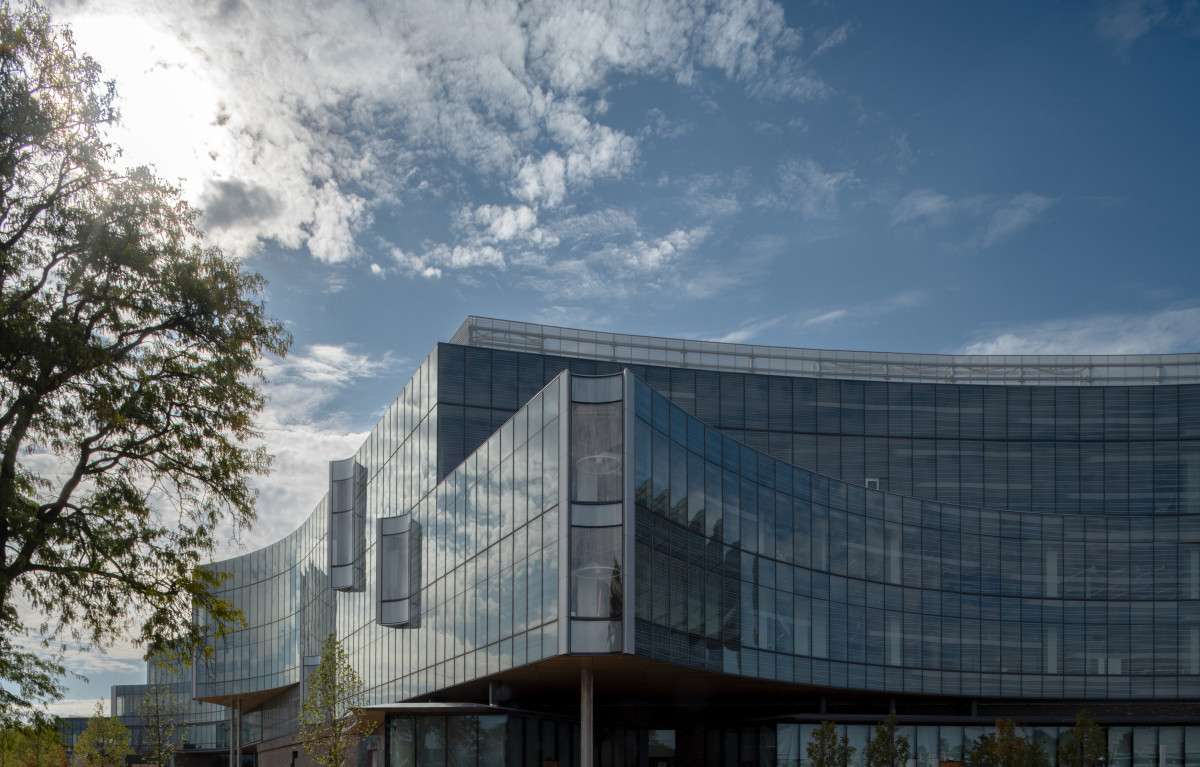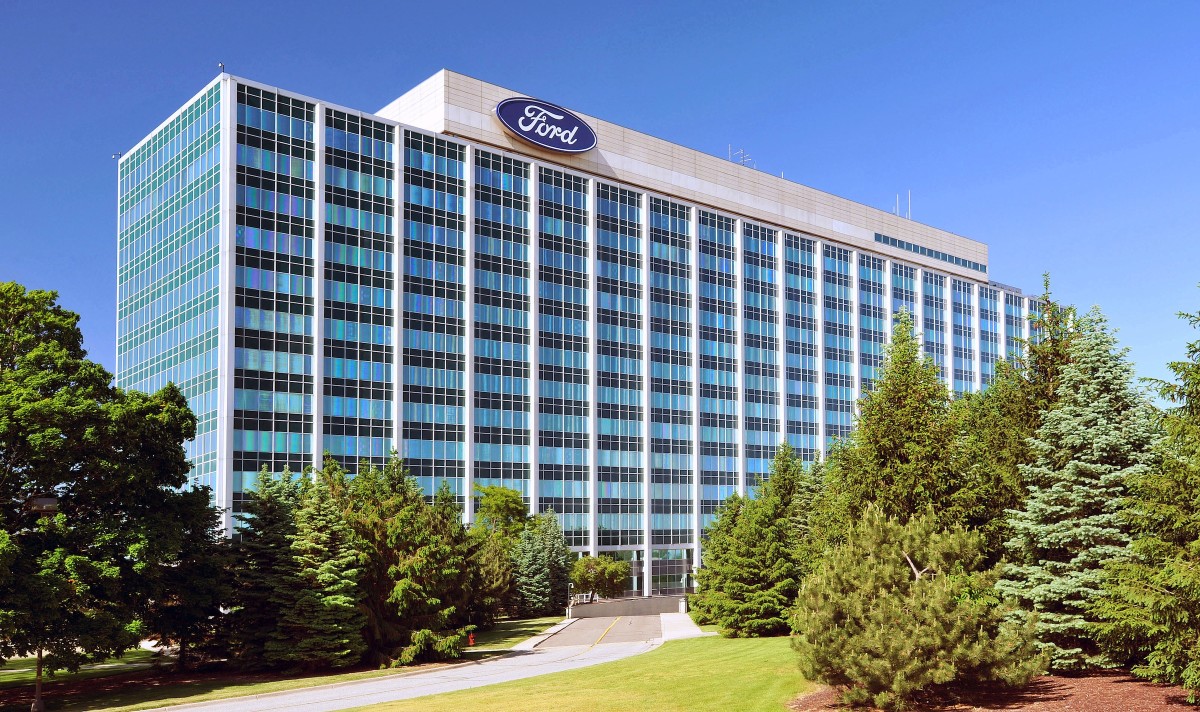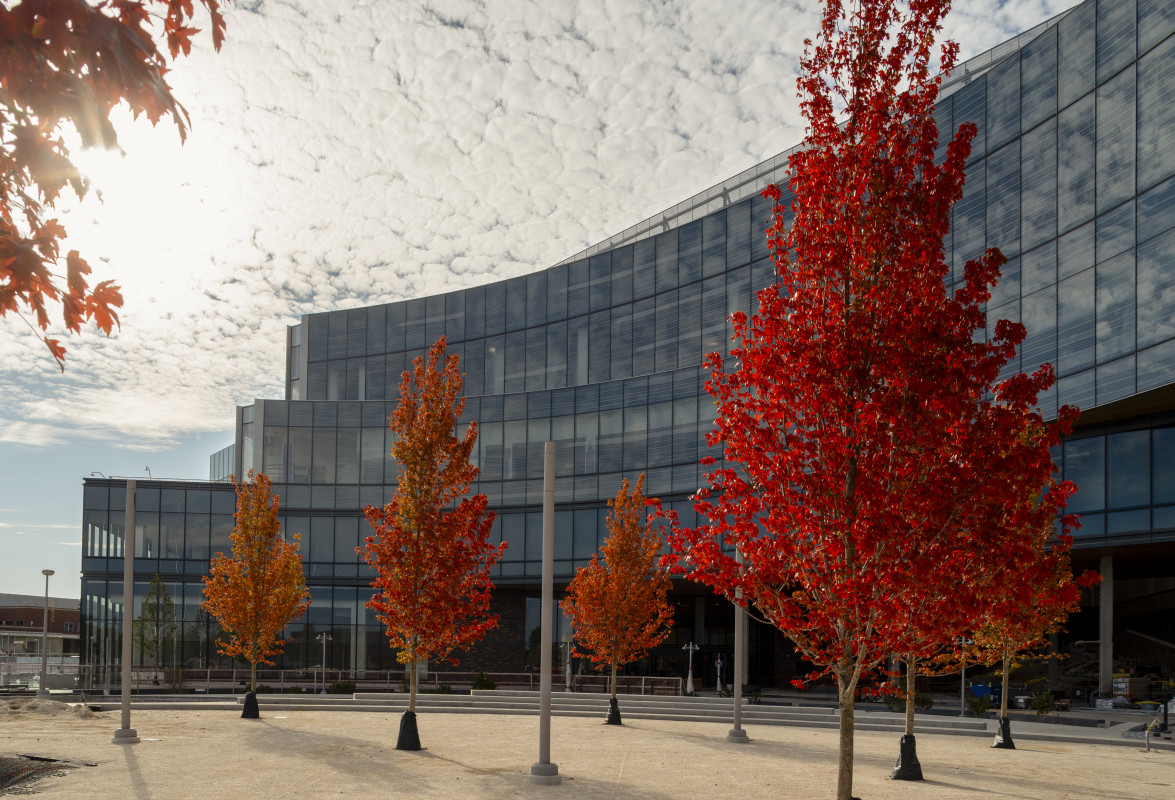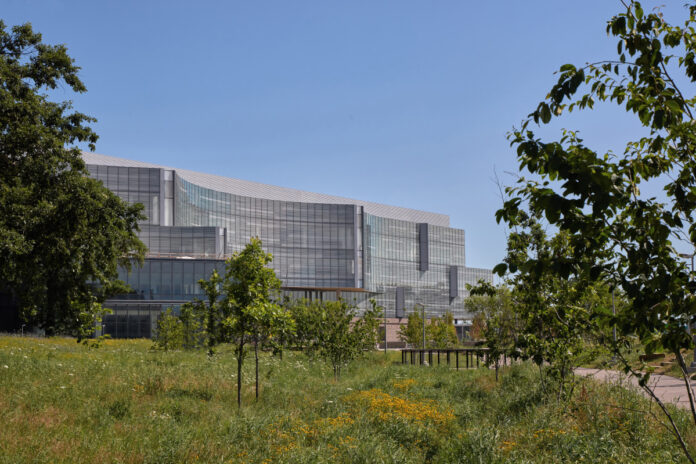Ford is eyeing cross-team collaboration
In an emailed statement to its employees on the morning of September 15, the Ford Motor Company announced that it would be moving its headquarters in November from its 12-story Dearborn office building to a new building located at its revamped and updated 700-acre product development, research, and engineering campus nearby.
The automaker stated that the new headquarters is not only two times bigger than the 70-year-old “Glass House” it is intended to replace, but also strategically placed to put 4,000 of its employees across its engineering, design, and technology departments in close proximity to each other in one collaborative space to enable innovation and solve problems quicker than before.
“This is more than just a new building; it’s a catalyst for innovation and a physical symbol of our Ford+ transformation,” the letter penned by Ford Executive Chair Bill Ford and Ford CEO Jim Farley said. “To win in this new era, we must work more closely together than ever before.”
Ford
View the 4 images of this gallery on the
original article
Collaboration and innovation
Per Ford, the new company HQ’s location is strategically placed in the name of accessibility and close collaboration across various vehicle development-related departments and even its C-suite. According to its own figures, about 14,000 employees will be within a 15-minute walking radius of the new headquarters.
The building will have six design studios, a large design showroom that will allow for a full product review in a single space, and over 300 tech-enabled meeting rooms. It will also feature a ton of amenities for its employees, including a 160,000-square-foot food hall featuring seven distinct restaurants with rotating menus, wellness rooms, mothers’ rooms, event spaces, a 100,000-square-foot indoor courtyard, and 12 acres of walkable green space that connects different buildings on the Dearborn campus.
Ford
In an interview with Automotive News, Ford Executive Chair Bill Ford stated that the new modern facility is a far cry from what he’s used to. He noted that some of its facilities are “really tired and in some cases embarrassing,” adding that the company’s product development center “hadn’t changed from the day I started there in 1979.”
He added that once the new HQ opens, it will be the first time Ford’s executives and product development crews will be together in the same facility. Today, Ford executives have to drive from one facility to another and find parking if they want to review a product, a process that wastes valuable time.
“The whole thing takes a long time,” he said. “Even if you’re only over there for an hour meeting, you’re probably burning two hours out of your day. This will allow much more real-time interaction between the studios, engineers, and executives.”
Ford Motor Company
The 70-year-old “Glass House” will have to go, but it is a relic of an old way of working
Opened in 1956, the 12-story Glass House, known formally as the Henry Ford II World Center, was one of the largest office buildings to be occupied by a single company, and throughout its 70-year history, it saw many historical feats achieved by the company.
However, despite its storied history, it was built for a time when office work was much different. Per Bill Ford, the glass house “was built in a time when everybody closed their door and had their private office and there wasn’t this whole notion of teamwork and collaboration.” Despite having a view from his top-floor C-suite office, the executive chair, former president, and CEO noted that he felt “cut off” from the rest of his employees.
“I just felt like I’m not where the action is,” he said. “It’s hard to get a feel for the business sitting in an office building with nothing else happening around you.”
Ford
Final thoughts
In its letter, Farley and Ford stated that the building will open in November 2025 and that construction of the final section of the building is ongoing, with completion expected in 2027. The Glass House will finish its move out in the first half of 2026. Afterward, it will be “sustainably decommissioned and ultimately demolished over the course of roughly 18 months,” with the site repurposed as “an asset to our local community.”
On one hand, it is sad to see a Detroit-area landmark go, but as companies evolve, they need to adapt in order to compete against their competition and give their younger and top talent a reason to show up to the office four days a week in a remote-work-centric environment.
Although General Motors is relocating its headquarters from one Detroit location to another, Ford’s idea to keep its executives and development teams close makes the automaker feel slightly more like Apple than a traditional automaker.
